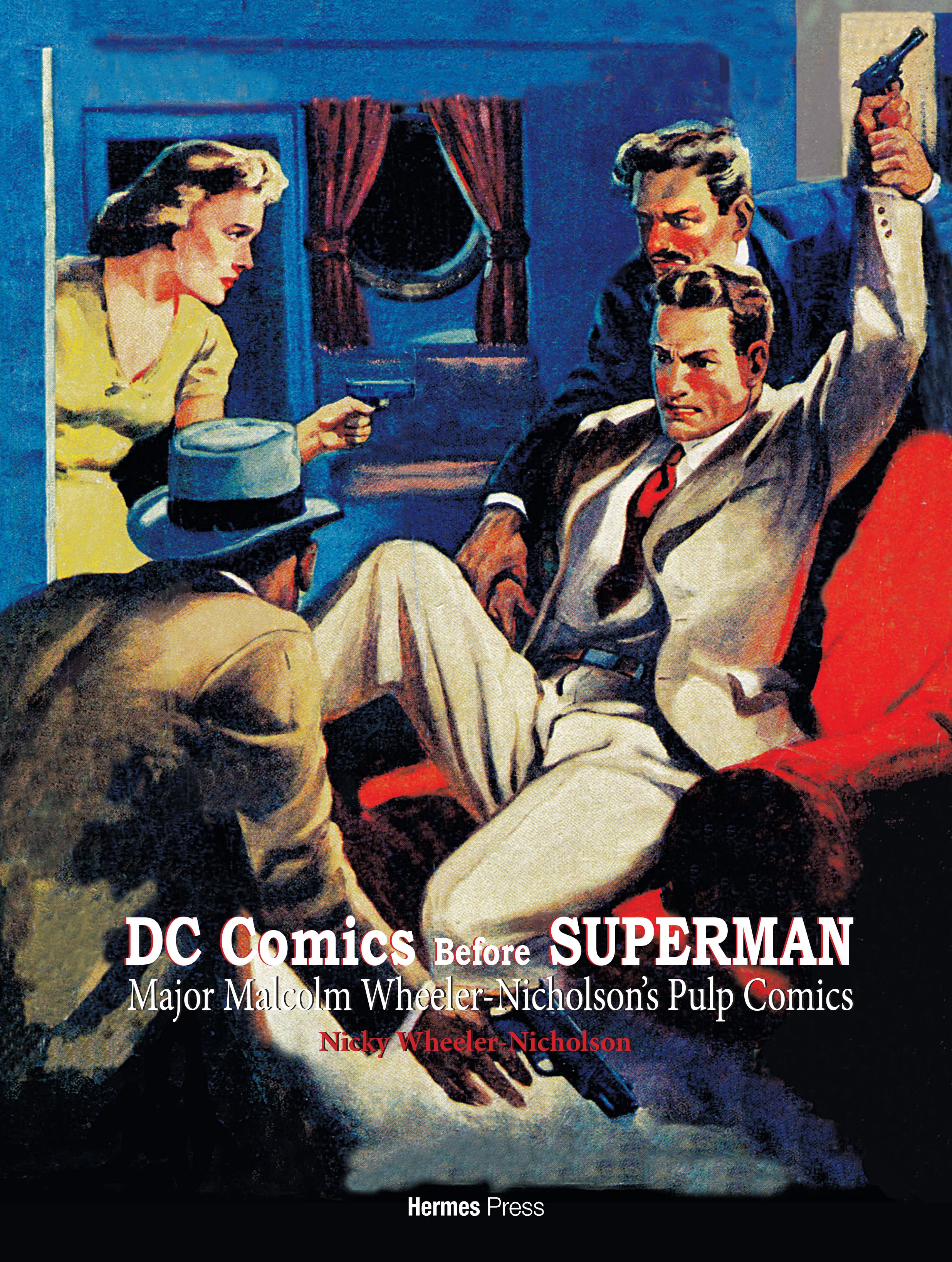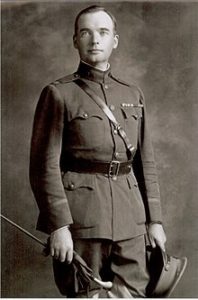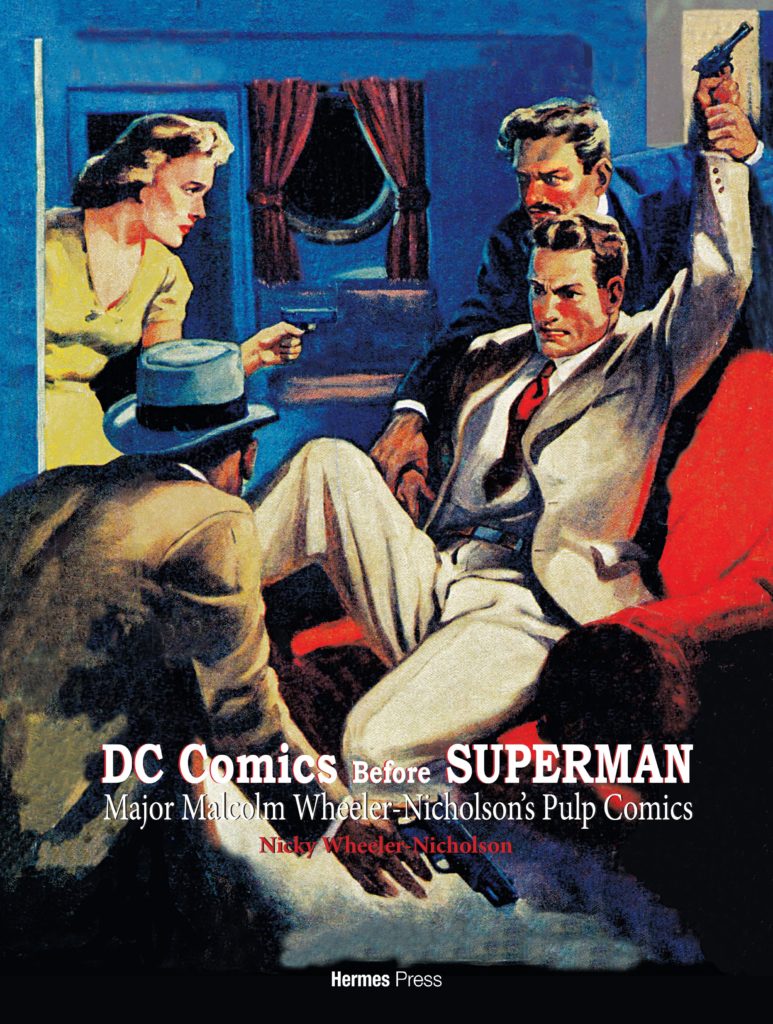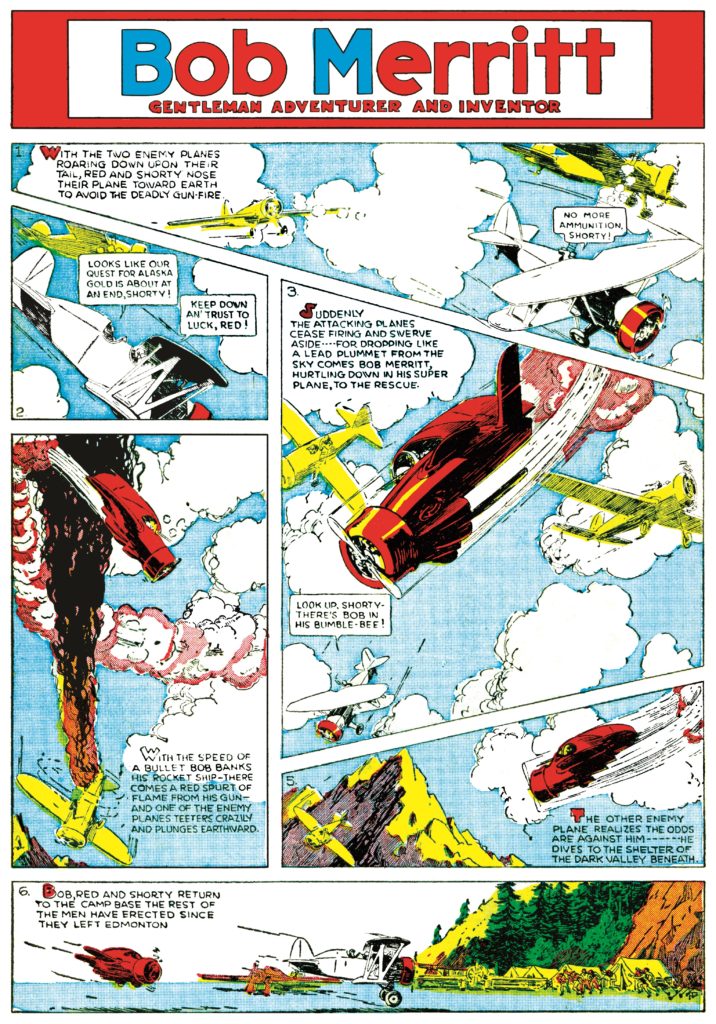Major Direct Currents

“Surviving in New York Requires like 2 jobs and a little fraud on the side (sic)” ~ from the ‘I’m Still So NYC’ Facebook group, via John Ostrander.
As an armchair historian and a comic book fan, I’ve always been fascinated by the intricacies of the earliest days of the comic book form, as well as the companies that originated it. Over the years diving into a variety of investigations into long-lasting companies like Charlton, Fawcett, Marvel, and of course DC, one gets the sense that nothing is as it might seem. In actuality, what might be addressed as fact by some writers is determined much later to be nothing more than spin by some persons undermining others, or it might be successful attempts at perpetuating a fabrication. When delving into the earliest depths of the companies that would eventually become globally known as DC Comics, there has always been this nigh-mysterious character known as Major Malcolm Wheeler-Nicholson. There were few pictures ever published of “The Major”, most of which can be seen on that oh-so-excellent resource, Wikipedia. Almost always, there’s this image of the man in his Army Cavalry uniform, a smallish picture that sometimes is printed so poorly the face becomes spectre-like. It has always intrigued, and with such little information ever given about The Major, he continued to be a curiosity, yet one seemingly dismissed as almost unimportant in the entirety of comicdom. When news reached that a biography on The Major would be forthcoming by his granddaughter, it was greatly anticipated.

Major Malcolm Wheeler-Nicholson
DC Comics before Superman: Major Malcolm Wheeler-Nicholson’s Pulp Comics, published by Hermes Press for a September, 2018 release, is not that biography. What it is, though, is an amazing teaser of historical significance, written with wonderfully deft prudence by Nicky Wheeler-Nicholson. Not only does it skillfully unravel some of the dark web of intrigue laced over the good Major, it includes works so rarely seen or reprinted that it must be admired by anyone interested in early publishing history, writing, and sequential art. Fronted by a fantastic introduction by the comic book great Jim Steranko, the reader is quickly immersed into the primeval days of comic book publishing, interspersed with anecdotes of The Major’s life, arrayed around releases of the first titles from what would become DC Comics.

There are a number of things to be discovered in DC Comics before Superman. Firstly, The Major is seemingly a particularly individualized thinker, clearly a man to be considered ahead of his time. It could be argued that post-Industrialization and following World War I, progressiveness began to stifle, but that’s fodder for debate, not a book review. The Major was obviously a progressive, independent thinker, not without a flair for the written word. As you read through the reprinted stories from New Fun Comics and More Fun Comics, you’re not only impressed with how well the stories hold up after nearly a century, but the incredible artwork from men (and women!) that are hardly even known today. Just look at this page from Bob Merritt, a character in all my interest in DC history and lore I’d never even encountered. The sweeping design of all the aircraft, including Bob Merritt’s oddball fantastic contraption, the panel layouts, and the action within each is just the tip of the craft that Leo “the Lion” O’Mealia brought to The Major’s script.

I found myself so engrossed into this one story I went back over it a few times. I could only imagine how it looked published in tabloid size. Yes, as I discovered in DC Comics before Superman, the first issues of these blossoming DC titles were not in the size commonly referred to as “Golden Age”, which is roughly 10 1/2”x 8”, they were full tabloid newspaper sized. It must’ve been a glorious sight for those action pages of Bob Merritt, as well as other heroes of The Major’s.
The Major himself was a world traveler, some of which came with his Army service, some from his later, married life. The man used every bit of his travels in his writing, which I think adds to his style and characterization. Sometimes the dialogue falls into a colonial sensibility, with racist denigration, regardless of character interaction. It can be a bit unsettling, but at least the art in most of these stories don’t completely fall into the racist stereotypes that were to be the norm for most publications of the time. He did enjoy strong women in his stories, adventurous, daring lasses that were quick to settle any males of the “dames can’t do what us men can” club. That can be especially seen in “The Monastery of the Blue Death”, a wild tale drawn with uncanny linework by Munson “Pad” Paddock, another pre-Superman artist that just astounds. His work is elegant and direct at the same time, creating pages of beauty. He is a worthy equal to any supposed superior artistry in newspaper comic strips of the same era. His women embody an elegance and strength that should have become a standard, and in some cases did. Discoveries such as this abound in DC Comics before Superman, and the author is well aware of it.
Historical introspection and reexamination can be misconstrued at times. Yes, it can be seen as a vindication of sorts for both writer and subject, particularly when there are familial relations. In this, it is in the best interest for the reader to accept what is being disclosed. There is nothing within DC Comics before Superman to undermine what occurred, nor is there anything plotted to destroy the reputations of those surrounding the good Major. It definitely shows that The Major was much more accepting of ‘sharing the wealth’, and allowing artists to gain monetarily from their work. Unfortunately for a man of principle and morality, he was fighting against the tide during the tumultuous time of the Great Depression, where men of far less scruples that had connections with those of less dutiful nature succeeded in the wilds of Gotham itself.
DC Comics before Superman leans deep into those lugubrious days of the Great Depression, when anyone and everyone were just trying to get by. It is likely that if The Major had a different turn of fate, he’d be remembered quite differently than he is now. The book itself leads right up to the time that Jerry Siegel and Joe Shuster were shopping their Superman idea around to different publishing houses, and how The Major may have been involved in bringing Superman to Action Comics. Unfortunately, he was left out of what came to pass with the iconic Superman, and Siegel and Shuster lost out on what they might have been allowed to share in on.
Readers looking for a biography of Major Malcolm Wheeler-Nicholson are going to be tantalized by the information within DC Comics before Superman. The man had a full life long before he lived in New York City and concocted his idea of brand new comic book tales in the format fans now know. There is enough to want to know more, much more, as his Army Cavalry exploits alone are enough to have film scriptwriters salivating. DC Comics before Superman is a concise tome of the creation and reproduction of the stories published while he still helmed the variously named companies that became DC. As the book ends at the point The Major lost control of his creation, there is only a small amount of what came after, leading the reader, and myself in particular, to want more. DC Comics before Superman strikes with the studied tactics of an experienced Army Officer, delivering its intent with the thundering crescendo of a full cavalry regiment. It’s an excellent widening of the window into a rarely explored area of the burgeoning comic book industry.

Nicky Wheeler-Nicholson
DC Comics before Superman: Major Malcolm Wheeler-Nicholson’s Pulp Comics by Nicky Wheeler-Nicholson is available from Hermes Press in September. It’s available for pre-order at your Friendly Local Comic Store or at bookstores near you.
Follow ongoing information and developments at Nicky’s blog site about Major Malcolm Wheeler-Nicholson and future publications!



©2018 Pint O’ Comics | About Us | Contact Us | Site created by One Flight Up Design